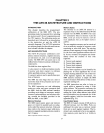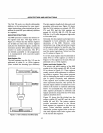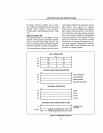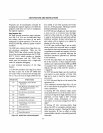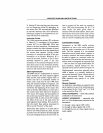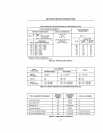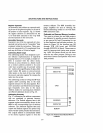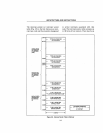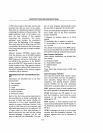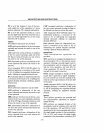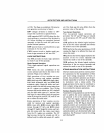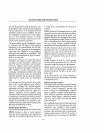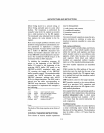
ARCHITECTURE AND INSTRUCTIONS
Register Operands
An instruction may address
an
operand resid-
ing in one of the general registers or in one of
the pointer or index registers. Fig.
2-5
shows .
the register selection.
as
deterinined by the
"r
/
m"
field (first operand) or the "reg" field
(second operand) in the instruction.
Immediate Operands
In general, one
of
the two operands of a two-
operand instruction can be
"immediate" data
contained within
the.
instruction~
These oper-
ands are represented in 2's-complement form
and may be 8-bits or 16-bits in length.
Addressing Mode Usage
The addressing modes were designed to per-
mit efficient implementation of high-level
language features.
For
example, a simple var-
iable
is
accessed with the direct mode,
whereas
an
array element in a based record
(at a memory address pointed to by some
other base variable)
maybe
accessed within
the indirect -through-
BX
-plus-SI -plus-offset
mode
(whereBX
points to start-of-record,
offset points to the
start of the array within
the record, and index register SI contains the
..
index into the array).
The addressing modes involving the BP base
register allow accessing data· in the stack
segment instead of in the data
segment. Rec-
ursive procedures and block-structured langu-
ages frequently store data in the stack.
Address modes for accessing data elements
use effective addresses shown in Fig.
2-6.
Addressing Summary
Fig. 2-7·summarizes the address Gomponents
that are combined to generate memory
addresses. The Default segment base
is
the
segment register automatically chosen by the
;8088
for the corresponding type of memory
reference. The Alternate segment base may
replace the Default segment
if
a special "seg-
ment override" prefix precedes the instruction.
The Logical address
is automatically. added
to
the chosen segment register to form the
2-8
memory address. The
8088
Assembly lan-
guage simplifies the task of selecting the
desired addressing modes for use with basic
8088
instruction types.
Dedicated
and
Reserved Memory Locations
Two areas in extreme low and high memory
are dedicated to specific processor functions
or are reserved by Intel Corporation for use
by Intel hardware and software products.
As
shown in Figure
2-8,
the locations are:
OH
through 7FH
(128
bytes) and FFFFOH
through
FFFFFH
(16 bytes). These areas are
used for interrupt and system reset process-
ing. iAPX
88
systems should not use these
areas for any other purpose. Doing so may
make these systems incompatible with future
Intel products.
r------------,
FFFFFH
RESERVED
r----------
.....
FFFFCH
FFFFBH
DEDICATED
r----------
.....
FFFFOH
FFFEFH
OPEN
BOH
7FH
RESERVED
14H
13H
DEDICATED
OH
MEMORY
. Figure 2-8. Reserved and Dedicated Memory
Locations




